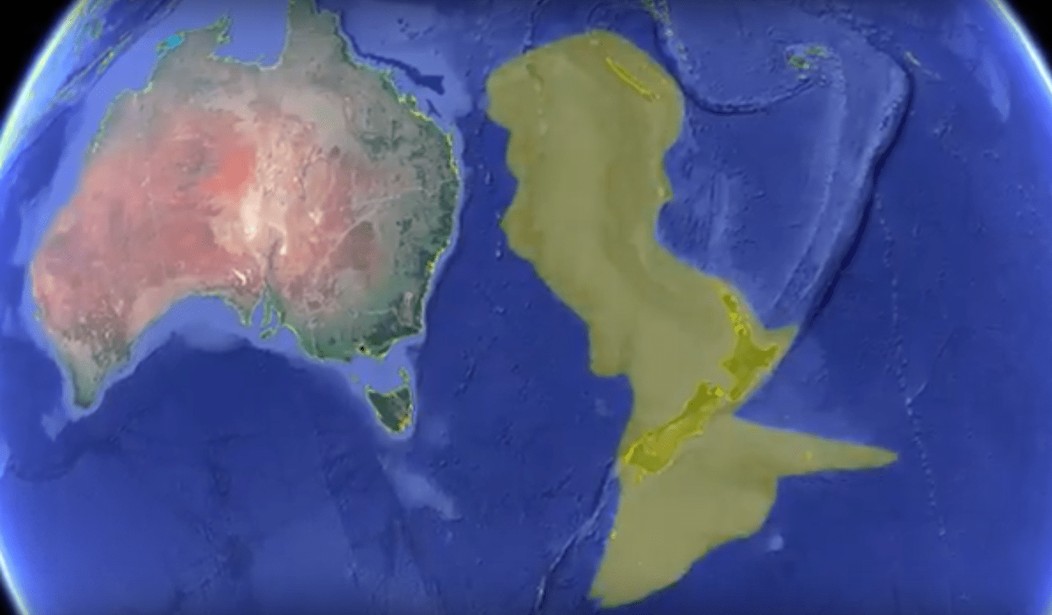In June, scientists announced the official discovery of a new continent underneath the Pacific Ocean surrounding New Zealand. This month, a team of 32 scientists from twelve countries returned to Tasmania after a nine-week voyage on the vessel JOIDES Resolution to study the submerged continent.
The legend of the lost city of Atlantis traces back at least to 360 B.C., when the Greek philosopher Plato wrote about it in his dialogues “Timaeus” and “Critias.” The advanced city rested on a massive island which was submerged in a cataclysmic explosion. Atlantis was remarked to be beyond the “pillars of Heracles” at the straight of Gibraltar, so it was thought to be in the Atlantic Ocean. The Pacific Ocean would be farther, but still past Gibraltar. Could Zealandia be Atlantis?
“No relation to Atlantis,” Jamie Allan, program director at the National Science Foundation’s division of Ocean Sciences (OCE), told PJ Media in an email statement. “Zealandia is a submerged continental land mass that is very large, hence calling it a continent,” he added. “I’ve read reports that the idea of calling it a true continent is controversial for some scientists.”
One of the main reasons why Zealandia could not possibly be Atlantis is that this Pacific Ocean continent has been submerged for at least 60 million years. “This expedition recovered sediments deposited under water that are around 60 million years old,” Allan told PJ Media.
In their research, the scientists discovered 8,000 specimens, including several hundred species of fossils, and pollen from land plants, the OCE announced in a press release.
“This expedition offered insights into Earth’s history, ranging from mountain-building in New Zealand to the shifting movements of Earth’s tectonic plates to changes in ocean circulation and global climate,” Allan said in the release.
Scientists drilled deep into the seabed at six sites in water depths of more than 4,101 feet (1,250 meters), collecting 8,202 feet (2,500 meters) of sediment cores. These findings revealed a great deal about the geography, vulcanism, and climate of Zealandia for the past 70 million years.
Expedition co-chief scientist Gerald Dickens of Rice University reported that significant new fossil discoveries were made, proving that Zealandia was not always submerged as deeply as it is now. “The discovery of microscopic shells of organisms that lived in warm shallow seas, and of spores and pollen from land plants, reveal that the geography and climate of Zealandia were dramatically different in the past,” Dickens said.
The new discoveries show that the formation of the “Pacific Ring of Fire,” the underwater volcanic chain that birthed many Pacific islands, caused dramatic changes in ocean depth and volcanic activity. Dickens suggested that the formation of this ring, which occurred between 40 and 50 million years ago, buckled the seabed of Zealandia.
While it would be fascinating to study the new species of fossils unearthed, Jamie Allan told PJ Media the scientists wouldn’t be talking about large land mammals or dinosaurs.
“The fossils recovered are of small organisms, most single cell,” Allan said.
It seems the discovery of Zealandia is most fascinating in terms of geology, climate science, and plate tectonics, rather than dinosaurs, early mammals, or humans.
While Zealandia is not Atlantis, there is a plausible alternative. In the 1600s or 1500s B.C., a giant volcanic eruption rattled the Mediterranean Sea, and a large island was ripped apart. The remains of that island stand on the Greek isle of Santorini, near the caldera of Thera. In 1964, archaeologists discovered the ancient city of Akrotiri, evidence of a civilization very developed for its time.
If Atlantis ever did exist, Akrotiri seems a promising match. Even though it has no relation to Atlantis, the submerged continent of Zealandia remains a wonderful and extremely interesting discovery.









Join the conversation as a VIP Member